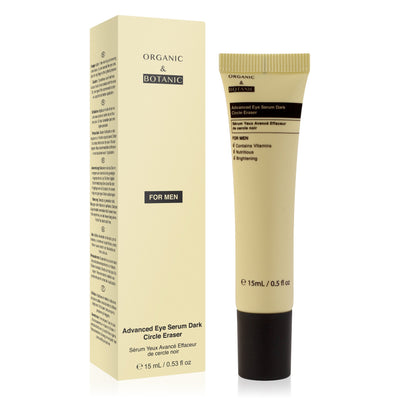How to look after Oily Skin
Oily Skin, Dry Skin, Combination Skin, Teenage Skin, Mature Skin and the list goes on, but one thing’s for certain - most people aren’t happy with the skin they have. So we’re going to take an in-depth look at the different skin types over the next few blogs. We’ll have a look at what works best in each case and how to correct those imperfections that we don’t like perhaps! Let’s start with Oily skin.
Skin is the largest organ in the body, yet it is also the most neglected one. Be honest, how many of you religiously apply moisturiser after every shower and bath? Oily skin is the skin type most complained about, and in fact, 75% of young people have it.
So what makes skin oily?
Skin is oily to a greater or lesser extent as a result of sebum. “Our skin’s oil is called sebum, and produced by the sebaceous gland in the hair follicle,” explains Andrea Pfeffer, founder of Pfeffer Sal in London.” per cm2, the skin on our face has more hair follicles than on the rest of our body, which is why we experience oiliness mainly on the face.”
What’s the function of sebum?
Sebum is there to lubricate the skin and prevent dehydration. As the hair follicle fills with lipids from the skin cells and sweat from the hair, the sebum is pushed out and spreads out over the skin in a waterproof layer.
The amount the body produces is linked to a range of reasons, from the weather and your diet to genetics, hormones and your skin regime.
Hormones and Oily skin
Levels of sebum fluctuate in line with rising and falling hormone levels - remember the horror of acne in your teenage years - this is no surprise and puberty is a recognised time of hormone hikes and falls so acne, which is one of the casualties of oily skin, is a common occurrence.
The Contraceptive Pill also causes an increase in sebum levels, but Vitamin A can cause it to fall.
Stress is a major contributor, so in times like lockdown acne rates often rise.
How to Treat Oily Skin
Oily skin is something inherent to an individual. It isn’t a good or a bad thing - just possibly an irritating thing at times. It isn’t all negative either - whilst oily skin can cause clogged pores and hence an increased likelihood of irritation, oily skin also has some big benefits. People with oily skin tend to age better as they develop less fine lines and wrinkles because their skin tends to be thicker. There’s a huge plus!
The trick to making the most of oily skin is to accept it. Forget about finding ways to get rid of it and think more about finding balance.
The steps you take to look after your skin don’t differ from someone with dry skin, but perhaps the products change a little.
A Daily Routine for Looking After Oily Skin
Cleanse, but resist the urge to overdo it
Rigorous washing of oily skin seems like the obvious treatment but think again. When the skin becomes so squeaky clean and dry from washing away the sebum, how does the body react? It goes into overdrive to create more.
Pfeffer advises against foam cleansers, suggesting a cream or milk, as these will dissolve dirt and debris without upsetting the barrier function and natural moisture levels of the skin.
Steer clear of alcohol-based cleansers claiming to be for oily skin as these again strip away all sebum and so cause an increase in production.
Use a Toner
Toners which contain botanicals such as Witch Hazel Extract are perfect for oily skins, absorbing excess oil whilst promoting antibacterial properties.
Exfoliate
Acids play an important part in exfoliation for all skin types but leave-on BHAs like salicylic acid are particularly helpful for oily skin types. BHAs (beta-hydroxy acid) are great at controlling excess oil production which impacts on the development of blackheads and spots. Their lipophilic properties mean that they are attracted to excess oil, and as a bonus, are also anti-inflammatory, penetrating pores to break down excess oil. Just swipe the salicylic acid over your face twice a day, after cleansing but never rinse it off - it will never be able to do its job!
Moisturise
The most important step in your beauty routine. The skin, like every organ, reacts to how you treat it. If you don’t moisturise your skin then it receives messages that it needs more moisture quickly. So guess what? Yes, it overcompensates by producing lots of oil to keep the skin supple. And you’re back to where you started.
Always use a moisturiser day and night. Your day cream should be a dual purpose / Spf 30+ especially in the summer, and many dermatologists would argue that you should be using SPF all year round.
Try to use an oil-free or non-comedogenic (non-pore clogging) product.
If you prefer a separate sunscreen then look for products containing Zinc Oxide and Titanium Dioxide as these help to prevent acne breakouts, and obviously fragrance-free for less irritation to the skin.
Conclusion
You can’t change what Mother Nature gave you but in the case of oily skin, you can embrace the positives of less wrinkled skin and a deeper tan, and work in conjunction with your skin to achieve a healthy clear-skinned glow.
Follow the same key steps as other skin types;
Cleanse, Tone, Exfoliate and Moisturise but choose products that contain beta-hydroxy acids (BHAs) such as salicylic acid to cleanse and exfoliate at the same time.
Remember to always moisturise - no ifs and no buts! Make sure your moisturisers contain sun protection SPF30+, that way your skin is protected from both UV damage and irritation.
Follow these steps and beautiful skin is yours for the taking.






